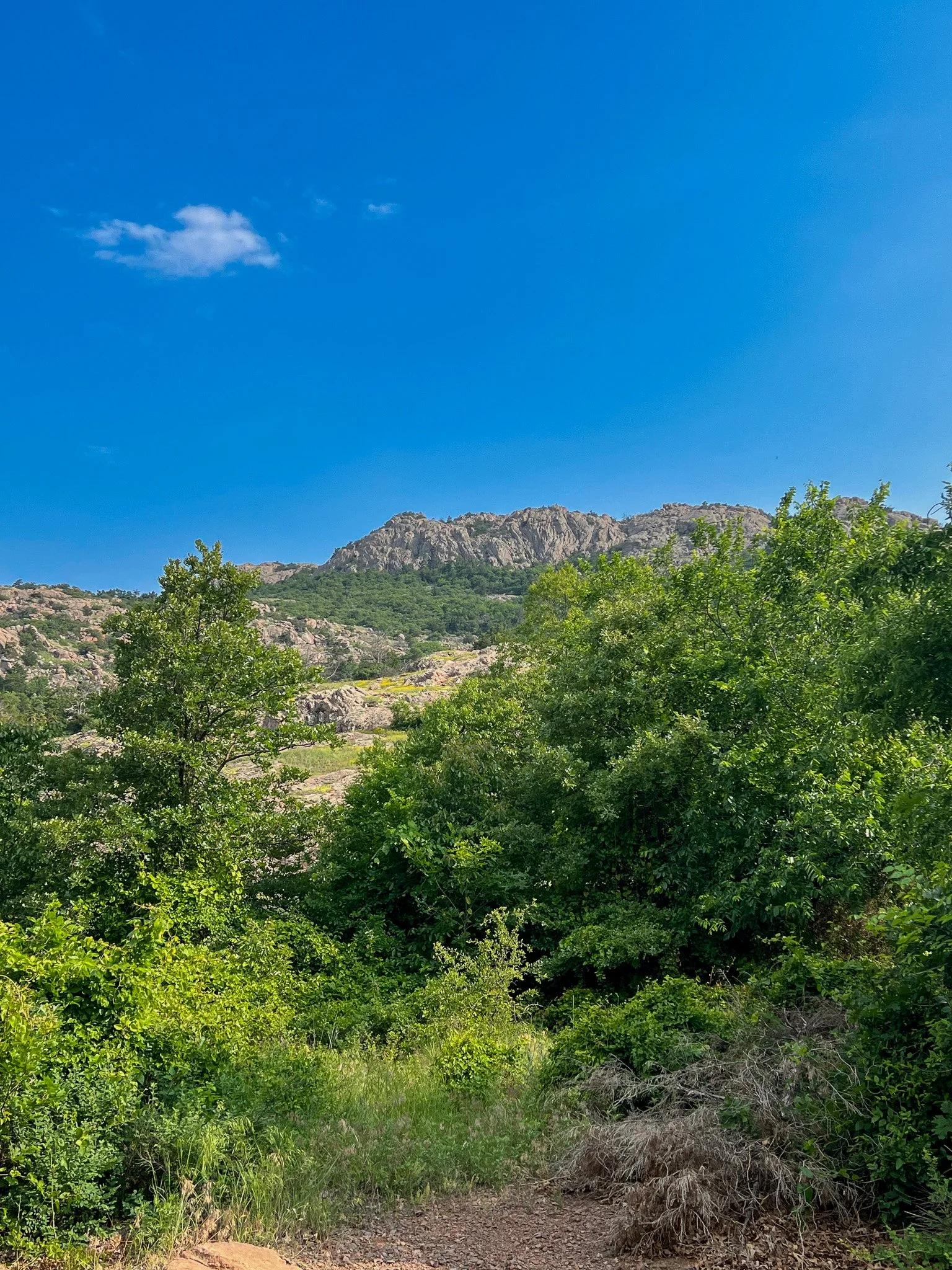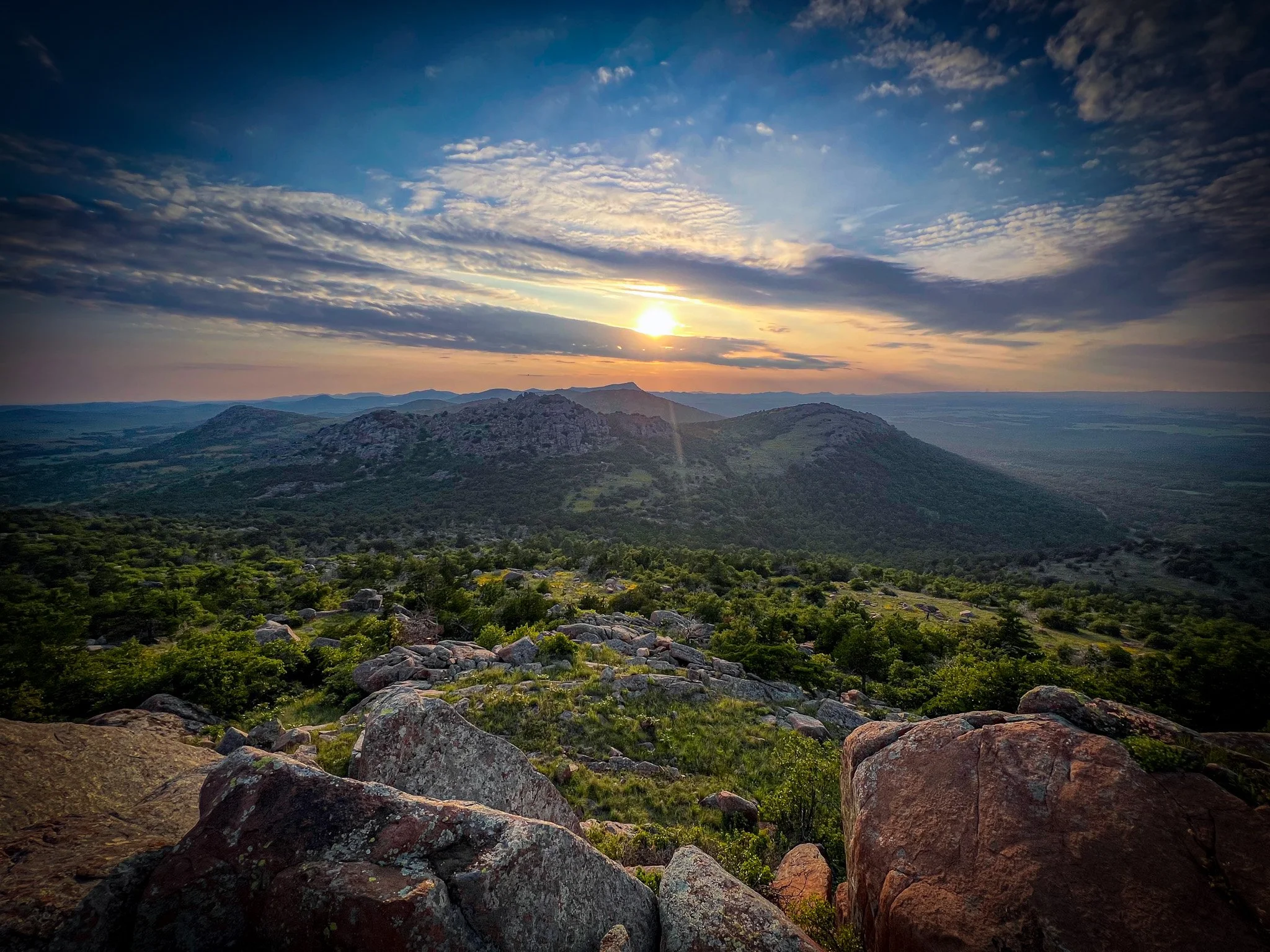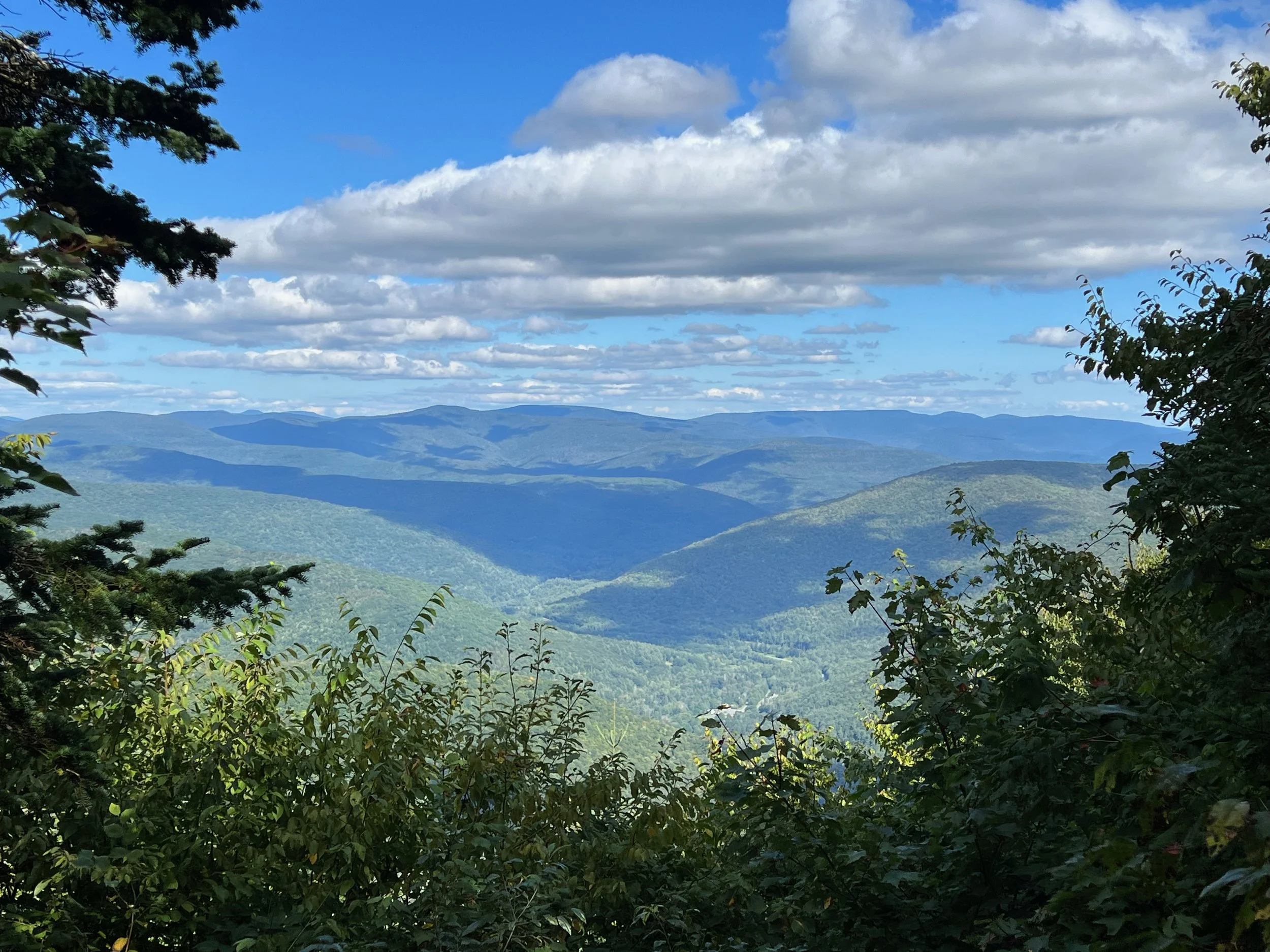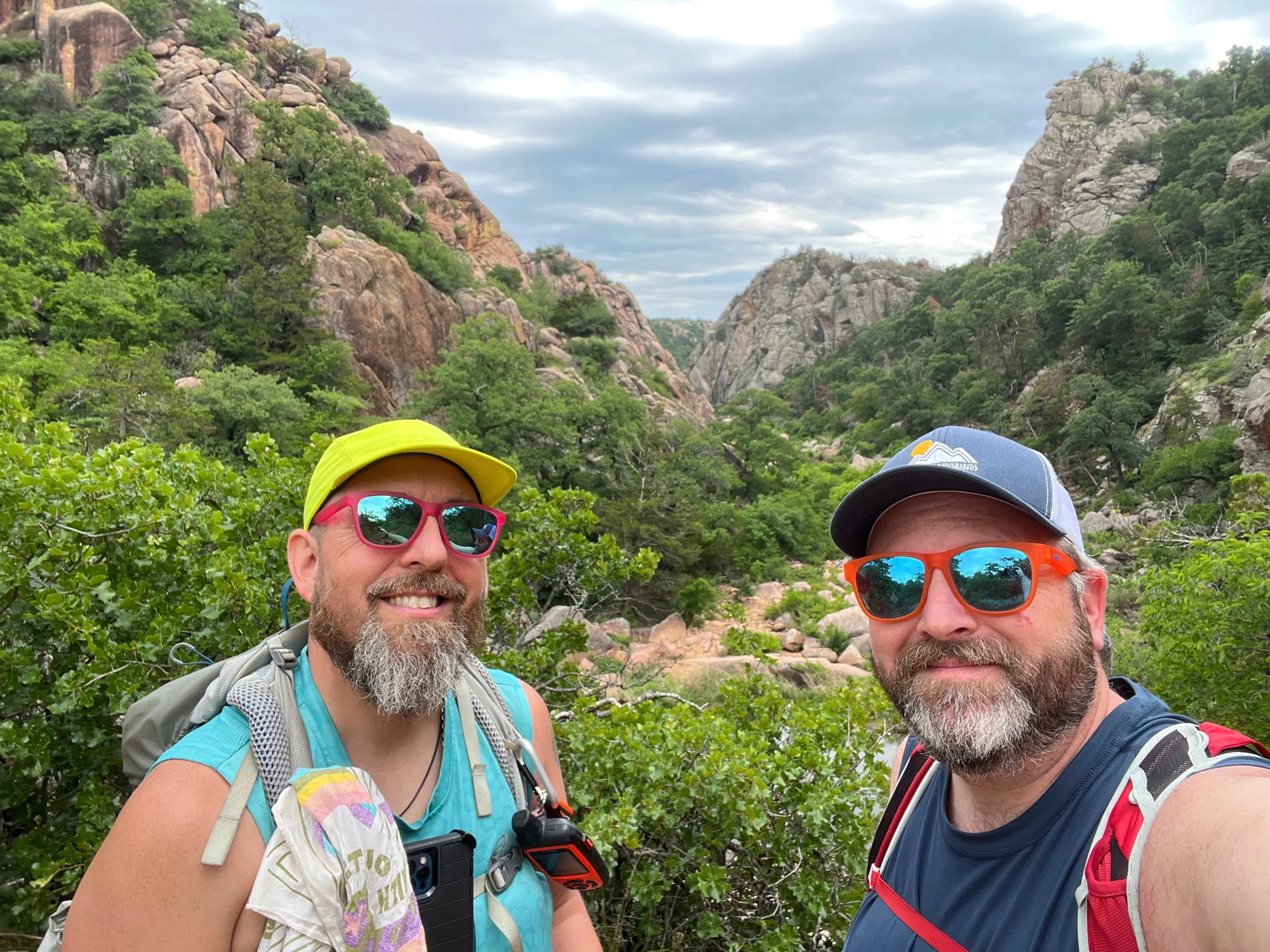Visiting the Wichita Mountains Wildlife Refuge
The Wichita Mountains National Wildlife Refuge in Oklahoma spans 59,000 acres of rugged granite peaks and rolling prairie. Home to bison, elk, and prairie dogs, it offers scenic drives, hiking, camping, and fishing. A must-visit spot is Mount Scott, where visitors enjoy panoramic views. The Wichita Mountains are perfect for nature lovers and outdoor adventurers in Oklahoma.
The Wichita Mountains Wildlife Refuge is a natural paradise nestled in southwestern Oklahoma known for its diverse wildlife and stunning landscapes. Situated amidst the ancient granite peaks of the Wichita Mountains, this refuge protects more than 59,000 acres, providing a safe haven for numerous plant and animal species.
The Wichita Mountains Wildlife Refuge is not just a sanctuary for wildlife but also a testament to ongoing conservation efforts. Established in 1901, it stands as one of the oldest wildlife refuges in the United States, preserving the natural heritage of the Oklahoma for future generations.The refuge boasts an impressive range of wildlife, including bison, elk, elusive white-tailed deer, bald eagles, turkeys, prairie dogs, and bobcats.
As you explore the trails and the backcountry, you'll be surrounded by stunning vistas of sweeping grasslands, shimmering lakes, and pockets of dense forests. The iconic Mount Scott, with its scenic drive to the summit, offers a panoramic view of the refuge, where you can witness the breathtaking beauty of nature unfolding before your eyes.
There's plenty to do here, with opportunities for scenic drives, hiking, camping, fishing, and wildlife photography. Whether you're a nature lover, a hiker, an adventurer, or simply seeking solace in the great outdoors, the Wichita Mountains Wildlife Refuge offers an unforgettable experience.
Geology and Geography
Located in southwestern Oklahoma about an hour and 15 minutes southwest of Oklahoma City, the Wichita Mountains are a unique landscape, dominated by the ancient granite mountains that rise abruptly from the surrounding plains.
The origins of the Wichita Mountains date back to at least 500 million years ago and were formed through a series of geological processes, including uplifts, volcanism, erosion, and tectonic activity.
Originally formed hundreds of millions of years ago and then buried by sediments, the Wichita Mountains that we see today have been exposed due to the erosion of the overlying rocks.
History
The first peoples of the Wichita Mountains area were the ancestors of the Wichita people, part of the Plains Village cultures that existed in areas that today make up Kansas, Oklahoma and northern Texas. Following first contact by the Spanish in 1541, the history of the native peoples in this region is marked by disease, conflict, forced relocations, and the loss of homelands.
Originally set aside in 1901 as a federal forest reserve, the reserve was redesignated by President Theodore Roosevelt as the Wichita Forest and Game Preserve. In 1907 bison were brought back to the Preserve and in 1908 elk were reintroduced to the area. In 1936 the Preserve was renamed as the Wichita Mountains Wildlife Refuge and included in the National Wildlife Refuge System, to be managed by the US Fish and Wildlife Service. The roughly 8,500 acres of Wilderness in the Charons Garden and North Mountain areas was designated as Wilderness in 1970.
Flora and Fauna
Protecting some of the last relatively undisturbed portions of mixed-grass prairie, the Wichita Mountains Wildlife Refuge protects a unique ecosystem with diverse habitats. The protected habitat is a home to more than 275 animal species. Most visible are likely the bison, elk, deer and antelope, but there are many smaller species of mammals, reptiles, and birds.
Visiting the Wichita Mountains Wildlife Refuge
The best way to begin your adventure is with a visit to the Refuge’s visitor center, where you can browse the exhibits, learn more about the Preserve, and get information on all of the activities you’d like to engage in. There’s also a small gift shop, so if you’re like us, you’ll be able to get your souvenir magnet from the visit.
It’s important to remember that the time of the year that you visit can make a big difference in your visit. During the summer months it is often so hot that active outdoor activities can be practically impossible. Hiking and other activities are best in the spring, fall, and winter months.
Be sure to pick up a map of the Refuge, it makes driving and exploring the area much easier. For hikers, it’s a good idea to pick up the Hiking the Wichitas book at the gift shop, which is the best guide you’ll find to the on-trail and off-trail hiking opportunities in the Refuge.
The Wichita Mountains Wildlife Refuge’s website has a lot of useful information on the Refuge and its activities, so it is best to visit the site before you get there. It also offers helpful tips for visiting, information on conditions, and more.
Things to see and do
An absolute must-see in the Wichita Mountains Wildlife Refuge is the scenic drive up 2,464-foot tall Mount Scott. There are great views all along the 3-mile long road, but the knockout views are at the top, especially at sunrise and sunset.
Another great (and easy) destination right along the Refuge’s roads is Prairie Dog Town, where you can pull over and enjoy the antics of dozens of prairie dogs close up.
There are a number of lakes within the Refuge, offering paddling and fishing opportunities.
If it’s history you’re looking for, there are several different historic sites with interpretive information around the Refuge.
We’ll dive into the detail about hiking opportunities below, but even from the car, there are also almost endless opportunities for wildlife viewing, photography, and birdwatching.
Camping
If you’re planning on staying in the Wichita Mountains Wildlife Refuge, you’ll be camping and there are really only two options - staying at the Doris Campground, or backcountry camping in the Charon Garden Wilderness Area.
On our visits, we’ve stayed at the Doris Campground, which offers sites for tents, campers, and trailers, along with bathrooms and shower facilities.
There are some very stealthy raccoons in the campground, so be forewarned! We chased off several groups of masked bandits and had to make sure everything was secure
Hiking
While there’s only 15 miles of “official” trail, there’s more than 22,000 acres of the Preserve open for public use, including the Charon Gardens Wilderness Area where you can go off trail and explore. This creates a lot of opportunity for hiking, though much as the Wichita Mountains themselves ruggedly poke up from the surrounding prairie, the terrain of the Wichitas is rugged and can be vastly more challenging than you expect based on other experiences in the surrounding region.
We’ve done of number of hikes in the Wichita Mountains Wildlife Refuge that range from very easy to more challenging. What we’ve discovered, especially coming from an east coast perspective, is that trails in the Refuge are often more of a “suggestion” than what we would think of a traditional trail. For sure, in some places you’ll be following a route that’s clearly a trail, in other areas, its more that you need to get from A to B and there could be several paths and route to get there.
We also have come to understand that there are plenty of hazards we, as east coast hikers aren’t used to - including cacti, rattlesnakes, and scorpions. Just one reason we’ve really enjoyed exploring this area with a local guide and good friend.
Our suggested hikes for the Wichita Mountains Wildlife Refuge, in order of easiest to most challenging are:
Little Baldy
The Little Baldy Trail is a 1.6 mile in and out hike that begins from the parking lot at the Quanah Parker Dam and travels 0.8 miles on a relatively easy to moderate route to the open rock summit of Little Baldy. Along the way there are some scrambles up the open rock summit, but they aren't very steep. As long as you're wearing good hiking shoes, it won't be a problem.
At the top of Little Baldy, you'll have a great view of Quanah Parker Lake, the surrounding peaks of the Wichitas, the Refuge, and the surrounding plains. The summit of Little Baldy Mountain itself is a rocky outcrop that offers a perfect spot to take a break, soak in the scenery, and capture memorable photos.
Forty Foot Hole
While you might think it’s a big hole in the ground, the Forty Foot Hole is actually the deepest section of the West Cache Creek gorge and is located along the Dog Run Hollow Trail Network in the Refuge.
We hiked up one bank of the creek, crossed at the damn above the Forty Foot Hole, and then hiked back on the other side of the creek and got a better view of the Forty Foot Hole from that side before crossing the creek and getting back to the trailhead. Our total hike was about 2.6 miles.
Elk Mountain
Elk Mountain is one of the taller peaks in the Wichita Mountains Wildlife Refuge of Oklahoma at 2,254 feet in elevation. The trail begins at the Sunset Trailhead and climbs steadily and moderately the entire way. Besides a short section through an oak forest, there are almost constant outlooks along the trail with panoramic views of the surrounding mountains and the prairie off in the distance.
The trail ends at the first summit bump on Elk Mountain, which has a rather large, plateau-like summit. We decided to keep going at this point, to the actual summit, which is about a third of a mile from that first summit. There's a pretty well worn trail most of the way and it was easy enough to follow and then hike on the rocks to the summit itself.
The Narrows
The Narrows are a granite gorge carved into the side of Eagle Mountain and a hike through the Narrows immerses you in a captivating natural wonderland, where rugged cliffs and rock formations tower above, creating a dramatic backdrop for this roughly 2.5 mile, moderate in and out hike.
The trail to the Narrows begins at the Boulder Cabin Trailhead and from there, the trail travels across country until it reaches West Cache Creek. It follows the creek for a short distance as it begins to enter its granite gorge, but then climbs up and over a ridge before returning to the gorge floor to avoid a large meander in the river. Once on the floor of the gorge again, the trail becomes more nondescript and a series our routes open up through the channel of the river, which gets narrower as you approach the Narrows. at its narrowest point, almost vertical granite walls rise on either side and a large pool of water fills the bottom.
We continued past the Narrows and to where West Cache Creek and Panther Creek intersect. It made for a perfect lunch spot with views of the Narrows, the more open channels of Panther Creek above us, and the larger West Cache Creek below us, along with all of the surrounding mountains and terrain.
Nearby Attractions
The Village of Medicine Park is just outside of the Wichita Mountains Wildlife Refuge and offers lodging, dining, and shopping options. It’s worth a visit on the way in or out of the Refuge. We’ve enjoyed stops on the way out to refuel on some great food after camping for a few days.
In Conclusion
You won’t be disappointed with a visit to the Wichita Mountains Wildlife Refuge. It’s such a unique area, especially when you consider much of the surrounding country. These ancient mountains offer something for everyone, from backcountry hiking to scenic drives. When we first saw these mountains for the first time, as we began to explore Oklahoma, we were blown away by their beauty and uniqueness. We’ll definitely be back to explore even more.
For More Information
You can find out more here:
Advice and Gear Recommendations
Some product links are affiliate links and we earn from qualifying purchases. Others are links through the Amazon Influencer program and as an Amazon Influencer, we earn from qualifying purchases. Still others, we just want you to know about some good gear we enjoy!
Important Hiking Considerations:
Weather: Check the weather forecast before your hike and be prepared for changes in conditions.
Safety: Some sections of the trail can be steep and rocky, so use caution and watch your footing.
Leave No Trace: As with any outdoor activity, remember to follow the principles of Leave No Trace. Pack out any trash, stay on the trail, and be respectful of the natural environment.
Explore more of the natural and wild areas of Oklahoma with our Oklahoma and Arkansas Hiking Playlist!











